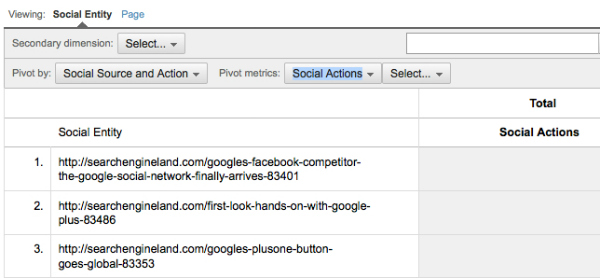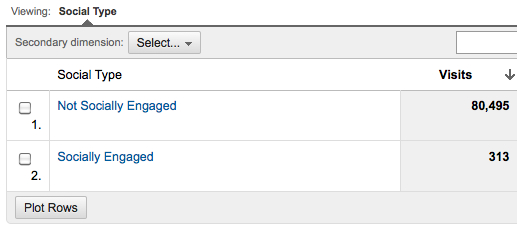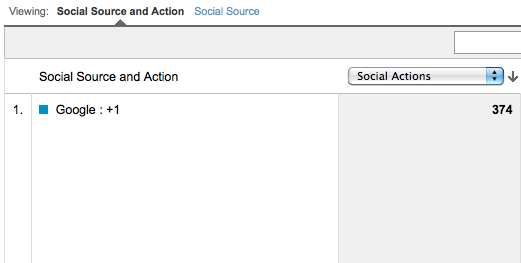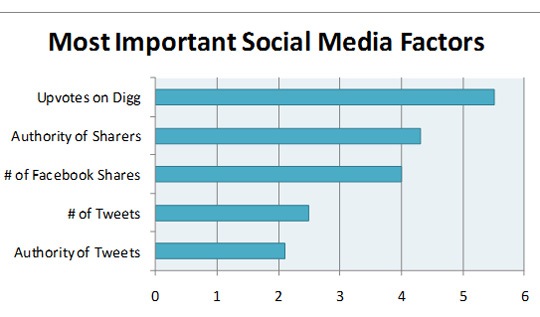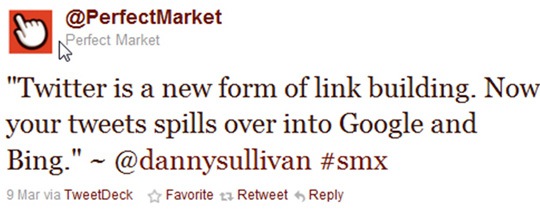I’ve never been quite so excited to talk about a new service. Maybe it’s just the “waiting for Christmas” phenomenon, where the anticipation over the last year has built up so fully that ecstacy is the only possible response. But enough beating around the bush!Google has just released their social network, and its name is Google+.
An Introduction to Google+
Although it’s only being tested on a very small scale, Google+ already shows immense promise. Yes, it has all the basics you want from a would-be Facebook killer: You can share updates, links, photos, and videos. You can chat, declare your interest in various topics, and rate comments from other users. But Google can’t just catch up with Facebook’s core features and expect to win. No one thinks of Google as social right now, and the road to changing that involves a hell of a lot of one-upping. Luckily, Google is on that path.
A Beautiful Interface
Google starts with a highly attractive design. Using their expertise in HTML 5 and,
according to Bradley Horrowitz, “Andy Hertzfeld, the original Mac guy,” the Google+ team has created an interface that’s smooth, simple, and attractive. While Gmail, Buzz, Wave, Docs, and the numerous other projects weren’t exactly seen as hideous monstrosities, they weren’t winning beauty contests either.
Beyond allowing for a real-time feed of what your friends are doing and sharing, the interface lets you easily access social sharing features from any Google-owned property, including the Google search page, Google Groups, Picasa, and YouTube. YouTube will likely be the strongest contributor to the welfare of Google+, especially given the long history of YouTube videos being shared socially on Facebook and Twitter.
With social networks working as a way to frame social sharing, the interface will go a long way. Is it more attractive than Facebook? Well, both look pretty good, and while I favor the Google+ slightly, it’s a tough call. Why don’t you decide?:
Image courtesy of Search Engine Land
Circles
While Facebook does have a group-creation option, and the ability to share content or be visible in chat with only select groups, Google+ Circles – the group fucntionality of Google+ – was built into the core interface and is both more intuitive and functional. You can literally click and drag your various friends into “Circles,” or groups who you can then share content with. The UI of the site, especially when it comes to sharing, is designed around sharing with your various groups.
That means you can easily share your recent misadventures with friends but not your parents, your political opinions only with those who won’t lynch you for your thoughts, and your enthusiasm for niche topics only with friends who are likely to be interested.
Sparks
According to the Official Google Blog entry which
announced Google+, Sparks is “an online sharing engine.” You can search for your interests and find popular web content, ranging from videos to blog entries to news stories to images and well beyond. You can then save any of the items you like for easy reference, share the content, or discuss the most popular items in a Top Interests segment of Google+.
Hangouts
Google+ aims at creating a more open-ended way to spend time together online that doesn’t treat online friends as “fast food” through Google Hangouts. Hangouts lets users create an open video sharing session that’s visible to friends. Others can then join the conversation, chat, and share content (such as items found by Sparks) with all the group members.
Google+ Profile
The new version of the Google profile takes a few extras into account, and the most prominent is Google +1. The “public”demarkation of those +1s will finally have some relevance: You can view what content a user has +1′d by browsing through their profile. This makes the +1 button the equivalent of a Facebook like for pages, while adding a Sparks interest is more like becoming the fan of a page.
Mobile Features
The Android version of Google+ is already available, and several mobile-specific features were created.
- Huddle is a feature that automatically creates a group chat that brings in a group of users who can use iOS, Android, and SMS to chat.
- Instant Upload, if enabled, lets video and photo taken with your Android phone automatically upload to a cloud storage in Google+. The media is private to start, but you can access the album and share any of the content with a single click.
- Location lets users geo-tag all of their posts, at their discretion.
Signing Up
Right now, Google+ is by invitation only, and the scale is incredibly small. So the last, but perhaps most important, thing you should know is that you can visit
this website to request your own invitation to the early-phase version of the Google+ project.
The Two Big Hurdles for Google+
There are just two things that Google really needs to do to make this product a success, but each one requires about as much effort as a full-scale Napoleonic campaign. The first is to convince users that Google+ is a better solution than Facebook. The second is to do so in a way that doesn’t self-destruct the entire project.
vs Facebook
The features above may well be better than Facebook, but the game isn’t over. Facebook has plenty of revenue, an established ad mechanism, a growing reputation, and – most importantly – 750 million users. For Google+ to win, they can’t rest on their laurels. Especially with the various features now being in the public eye, Facebook has the opportunity to take one of many combatitivepaths.
- Facebook can match the features, point for point. Video sharing? You bet. Easier group functionality? No problem. It would certainly require investment from Facebook, but they’re completely capable of getting a point-for-point score for everything Google is doing. The real trick is doing it fast enough that users don’t migrate, and in a way that holds water for the long-run.
- Facebook can leverage their brand and established user base. Bringing the Facebook track record to bear takes little effort butfunctions as a fully-armed armada against Google.
- Facebook can innovate in new directions, using the user feedback on both Facebook and Google+. Seeing what Google is doing that is or isn’t working, Facebook can attempt to re–one up Google.The war starts today, but Google has by no means won just by having a few neat features. The 750 million user mark of Facebook, not to mention tens of thousands of established pages and advertisers, is quite the mountain to climb.
vs Themselves
In a discussion with
Tech Crunch‘s MG Siegler, Vic Guntroda – Google’s VP of Social – stated that, “We believe online sharing is broken and even awkward. [...] Our online tools are rigid. They force us into buckets – or into being completely public.” The solution, as you can see through the many features provided above, is to become a completely new type of service with a number of high-stakes raises on the existing model.
Is that wise? Well, it may be the only way to break the mold enough that users actually start to migrate (and/or couple their Facebook/Twitter use with a post in Google+). It also means that Google has a lot to lose. Each new feature, especially since they haven’t seen broad testing, represents a potential dud. While you can argue that more products means that at least a few services should shine out, any product that fails within this framework will make the entire service less functional overall, more weighed down in unnecessary extras, and will increase skepticism.
If people become skeptical, they won’t join the service. They won’t refer friends. They won’t share frequently. They won’t hang online for Hangouts or add their interests in Sparks. Instead of using a sniper rifle, Google is using a shotgun, whose spray and pray method that – while it looks beautiful – increases the likelihood that something won’t pan out. A weighed-down, high learning-curve new service isn’t likely to win customers.
Google’s mission in social is a big deal, and the company values it immensely. Larry Page, the company’s new CEO, even tied the bonuses of all Google staff members to success in the social arena. Meanwhile, Facebook is becoming the top hub for people to spend time on the web, and as web advertising becomes more prominent, display ads – especially those on Facebook – win the majority of new exposure. It makes a lot of sense that Google would be investing so heavily. In the process, though, they might just be shooting their own service – not to mention the immense resources and any real opportunity to try this again in the future – square in the foot.
What’s Missing?
There are a few important elements missing from Google+ at this early phase, and Google will need to compensate if they want a sustainable product. Those items are:
- A user base. ‘Nuff said.
- An ad model. Currently the user interface doesn’t have any advertising slots. Will Google go for the unobtrusive text-based ads? Will they use this as the Mecca of Google display advertising? Could it be an extension of the Google Display Network? In any case, Google needs to monetize before this will be a real product.
- A promotion mechanism. Will Google+ follow the Gmail concept, moving from a limited, invite-based beta into an open-for-business service? Will they try to push the release on other Google sites, as they did so successfully with Chrome? Will they try to do real-world events, as they did with Google Places? Whatever Google does, it will have to take into account both the PR nightmare of launching a Facebook competitor and the need to succeed in social.
Final Thoughts
Google+ is being played as an “extension of Google,” and it certainly takes into account the various Google technologies – voice, video, local, mobile, etc. – that Google has built over the years. Each of these technologies may serve as a pillar for Google+, assuming that the weight of the project isn’t too high.
But there shouldn’t be a mistake about what Google+ is. Despite the fact that Google is denying the “Facebook killer” moniker, it’sclear that this is a full-fledged social network, and Facebook is the most comparable. People won’t be picking both. It’s going to be one or the other for most users, and while there may be a healthy split between the two – a la iOS vs Android – Google will come out as either a winner or a loser.
This is a great looking new product. It’s smooth, it’s intelligent, it’s innovative – it’s everything we’ve come to expect from Google, and far more than we’ve come to expect from them on the social front. They have great selling points. All that being said, the service is also continuing the habitual “everything you could imagine” sales pitch that often shows flagging results for the company.
What will make or break the service isn’t the features, isn’t the release style, isn’t the ad model, and certainly isn’t the Google brand. It’s whether they can get the early momentum they need to convince users that this product isn’t just a dud, and thus deserves its cut of the social network pie. To do that, Google needs to execute every level of the service, from UI to UX to promotions, with absolute precision.
